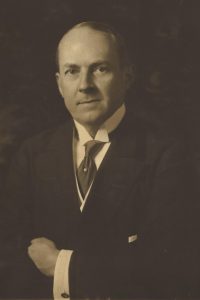One of the trends in my ancestry is the curious one whereby, when given the choice between staying in a locale or moving on, my nineteenth-century forebears often remained behind as other relatives ventured further west. One of the sadder family stories is covered in the 1999 book Intimate Frontiers: Sex, Gender, and Culture in Old California, by Albert L. Hurtado, and concerns my great-great-great-uncle John Henry Beeckman (1818–1850).
Uncle John was the eldest son of Henry Beeckman and Catherine McPhaedris Livingston, and the family was a prosperous one in the days before the Civil War. That they were socially acceptable to New Yorkers and Virginians alike is suggested by the fact that John H. Beeckman married Margaret Gardiner in 1848 at the Virginia plantation of the bride’s brother-in-law, former President John Tyler. Still, John Beeckman was a young man, fired up by the discovery of gold in California, and in 1849 he left bride and newborn son to travel west.
Actually, though, the route to California went through Brazil, a long and eye-opening trek for gold-seekers. When his ship finally reached Rio de Janeiro, Uncle John admired the landscape but found the Brazilians "poor [and] miserable.” In his correspondence, he himself displayed some unattractive qualities: as Hurtado notes, “Beeckman’s ethnocentric pride, religious bigotry, and racial prejudice made it impossible for him to sympathetically observe the people of Rio.”[1]
When he finally reached California, his connections back east were of little use. Instead of prospecting for gold, he opened a store in Sacramento, hoping to profit from the prospectors. This venture failed, and during a hunting trip in 1850 he accidentally shot himself: “My God, I am shot,” he exclaimed, and died moments later. Hurtado quotes an Indian witness to Uncle John’s burial who called out “Adios, hombre”[2] – rather an unsatisfactory end to his western adventure!
Family legend adds the sad end of Aunt Margaret (Gardiner) Beeckman,[3] who took poison by mistake, and the early death of their son, Henry, who was killed in a riding accident.
Compare this to my great-great-grandfather, Gilbert Livingston Beeckman (1824–1874), who married Margaret Atherton Foster in 1851: they stayed in Manhattan, with sojourns in Dutchess County, New York, and Newport, Rhode Island. It took another generation – their children Helen Lyman, Mattie French, and Livy Beeckman – to venture out to California, but only seasonally, going and returning by a fast train.
This trend is repeated in other branches, and greatly eases my genealogical research for this period. On the other hand, there is something rather glamorous about my German-American great-great-great-uncle Edward L. Boucher (1843?–after 1920), a jeweler and watchmaker who was living in Nephi, Juab County, Utah, in 1920,[4] far indeed from his sister-in-law, my great-great-grandmother Mary Frances (Giles) Boucher, in Baltimore, Maryland. I’m quite sure my mother, who grew up in Baltimore, was unaware of her Boucher cousins in Iowa and Utah, some of whom were alive in her childhood.
One of the fascinations of genealogical research is this sort of reclamation, of collateral relatives whose stories were hinted at (Uncle John Beeckman) or simply forgotten (Uncle Edward Boucher). No doubt my paternal grandfather and maternal grandmother knew something of their Victorian relations; only now – with all the resources available via the internet – can we fill in some of the family detail inevitably lost between generations.
Notes
[1] Quoting from “Crossing the Borders: Sex, Gender and the Journey to California,” in Albert L. Hurtado, Intimate Frontiers: Sex, Gender, and Culture in Old California (Albuquerque: University of New Mexico Press, 1999).
[2] Ibid.
[3] She is buried at South End Cemetery in East Hampton, New York (http://www.findagrave.com/cgi-bin/fg.cgi?page=gr&GSln=beeckman&GSfn=margaret&GSbyrel=all&GSdyrel=all&GSob=n&GRid=17199478&df=all&).
[4] 1920 Federal Census, T625_1863, p. 175A.
Share this:
About Scott C. Steward
Scott C. Steward has been NEHGS’ Editor-in-Chief since 2013. He is the author, co-author, or editor of genealogies of the Ayer, Le Roy, Lowell, Saltonstall, Thorndike, and Winthrop families. His articles have appeared in The New England Historical and Genealogical Register, NEXUS, New England Ancestors, American Ancestors, and The Pennsylvania Genealogical Magazine, and he has written book reviews for the Register, The New York Genealogical and Biographical Record, and the National Genealogical Society Quarterly.View all posts by Scott C. Steward →
